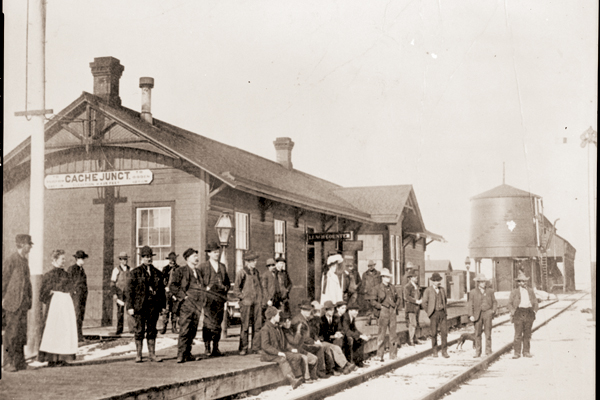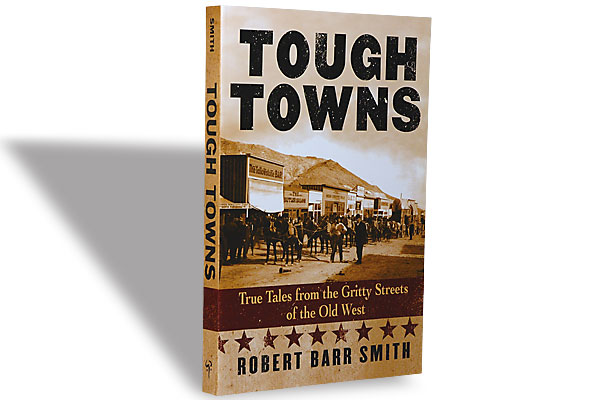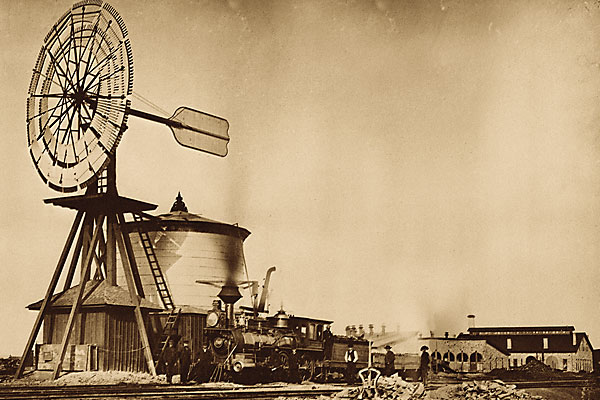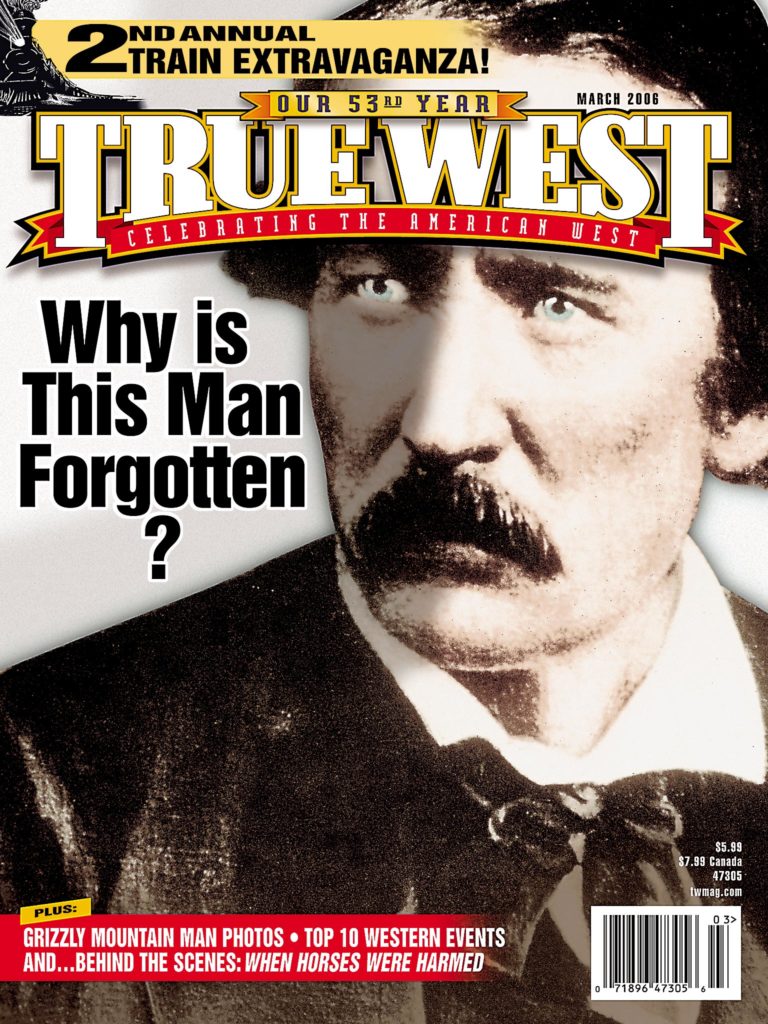 Many towns throughout the West owe their existence to railroads. Not many still celebrate their rail heritage. But 10 noteworthy trains are still running full steam ahead—thanks to these great towns who champion the choo-choo way of life. Two of these towns, though, are in danger of losing their train.
Many towns throughout the West owe their existence to railroads. Not many still celebrate their rail heritage. But 10 noteworthy trains are still running full steam ahead—thanks to these great towns who champion the choo-choo way of life. Two of these towns, though, are in danger of losing their train.
Tumultuous Turn for Train Towns
Cumbres &?Toltec Scenic Railroad
Just when railfans thought America’s longest narrow gauge ride was out of survival mode and tooting for the future, the Cumbres &?Toltec Scenic Railroad’s preservation corporation stepped down last November, citing a lack of “appropriate funding,” with Commission Chairman Rey Medina admitting that the railroad is “$807,000 in the hole.”
As of press date, there has been no guarantee that the railroad will survive to see a 2006 season. But we’re hoping that some Friends will see its historic value and pull the former Rio Grande remnant back on track.
After all, this is not the first time the railroad has suffered from dire straits.
The railroad almost closed seven years ago after mismanagement left no operator in place. A run down railroad with no promise of funding for repairs may not be every investor’s dream, but by 1999, the Cumbres & Toltec Scenic Railroad had many friends on hand. About 1,800 or so.
After Albuquerque attorney Bill Lock enlisted a friend to help him refurbish an old refrigerator car body for the railroad in 1981, volunteers from around the country began coming in the summers to help preserve the railroad’s buildings, rail cars and line signs.
When no one stepped up with the right bid to save the C&TSR, the Friends of the C&TSR, as they called themselves, established a preservation corporation, which raised $300,000 for the railroad. The Friends won the contract in 2000, following up their original fund-raising with an $800,000 track grant from the U.S. Department of Commerce.
With the preservation corporation terminating its contract, the commission that manages the railroad for Colorado and New Mexico is currently working to find funding so the train keeps chugging along.?Colorado and New Mexico’s legislatures have been asked to cover the shortfall, reports the Valley Courier in Alamosa. If the Sangre de Cristo Heritage Area is established in Alamosa, Conejos and Costilla Counties, there is a possibility some of that money will go to the railroad, says Ann Marie Velasquez, executive director of Los Caminos Antiguos, who is working on the project with Colorado Sen. Ken Salazar.
A record 70,000 railfans have traveled the C&TSR in its best year (1998), and hopefully, there are more to come. During the 64-mile stretch from Chama, New Mexico, to Antonito, Colorado, some flashes of color showcase the railroad’s history—gifts of past Friends (and perhaps, inspiration for future Friends).
Chama is at the base of the over 10,000-feet high Cumbres Pass. At Cumbres, rail riders can see the first of company buildings restored by Friends over the years: painted in gold with brown trim, to represent the 1914-45 era. Brown in Osier means the buildings date to the 1880s. White with green trim in Sublette links them to the 1960s. (The railway dates back to the 1880s when it became the San Juan extension of the Denver & Rio Grande.)
Although Chama is a town of a mere 1,000, its train spirit cannot be missed. Facing its Main Street is a rail yard full of original Rio Grande freight cars and cabooses, and an engine terminal bursting with steam locomotives.
Before reaching the terminus, the train passes Toltec Gorge of the Los Pinos River. Although the spur, Antonito, another small town with about 900 residents, has in the past been seen as less of a train town, the Conejos Museum was scheduled to open there soon, featuring a history of the railroad. Whether Antonito will ever get a chance to show off its train fervor is likely largely dependent on whether the C&TSR has any Friends left to count on.
Durango/Silverton, Colorado
The nation’s top narrow gauge railroad got its start the old fashioned way—the Denver & Rio Grande line founded Durango in 1879, although rail service didn’t reach there until two years later. It took only 11 months from that point—1882—for tracks to be laid to Silverton.
Originally, the line was built to haul ore from Silverton down the mountains to Durango—and supplies back up to the mining town. But passengers were part of the equation from day one. And folks in both towns realized that sightseers would love the long climb, featuring incredible views of the San Juan Mountains.
Sightseeing became more important as the Silverton area mines began closing in the early 19th century. By 1947, the line was in danger of closing—until some locals got together to keep the operation going. They also got the attention of Hollywood, which shot some half-dozen films there in the next 10 years. Butch Cassidy and the Sundance Kid used the location in 1969, and the area continues to benefit from movie money. It is that scenic and beautiful.
In the 1960s, the Durango & Silverton was designated a National Historic Landmark. And a new owner rescued the line from financial difficulties—and implemented many improvements, the most important being the winterization of the engines and cars, allowing year-round use.
Durango is home to 15,000, with trendy restaurants mixed in with old and beautifully maintained buildings. Silverton would likely be a ghost town without the railroad. About 200,000 folks visit each year, and most arrive via train. That’s compared to just 500 year-round residents. Wood and brick Victorian structures line its main street, giving it a real Old West feel.
Today, both towns feature 19th-century depots. Silverton’s depot houses the Freight Yard Museum, while the railroad’s history museum is found at the Durango Roundhouse, down the tracks from its depot. Inextricably linked by train tracks, Durango and Silverton are the very definition of train towns.
Guthrie, Oklahoma
Guthrie was a true boomtown, created almost overnight when the Oklahoma Land Rush started there in 1889. And the Santa Fe Railroad brought many of the land seekers to the new town. The fact that Guthrie was territorial and state capital—until 1907—only served to increase train service. In fact, between its founding and 1930, the town was a stopping point for six different lines and an interurban to and from Oklahoma City. The intervening years were rough ones, but local residents have never forgotten their railroad heritage.
The 1903 depot was renovated using private funds in 1997. Today, it serves as an arts and community center. And in 2005, it reverted back to its original use—passenger service returned to Guthrie during its annual Bluegrass festival. Locals are hoping that the success of that limited effort will lead to regular Amtrak service in the future.
They are also pushing state officials to support the creation of the Oklahoma Territorial Railroad, which would run between Oklahoma City, Guthrie and Fairmont. It would be a multi-purpose service, including freight and people. But the emphasis will be to encourage even greater tourism throughout that part of the state. “All aboard” could be heard starting in 2007, if the project sticks to its time line.
Heber City, Utah
The Heber Creeper (so-named for its slow-paced crawl up Provo Canyon) has been alive and well since the fall of 1899. It “baaa’d” during the 1930-40s when Heber Valley transported more sheep than anywhere in the nation. The Denver & Rio Grande Western, however, abandoned the line in 1967. But it took only three years for the city to get its engines moving again.
Specifically, those engines were two 1907 Baldwin steam locomotives that rightly put on some puffed up airs. Not any engine can boast, like No. 168 can, that it is the first to be taken off display in a park and put back into service. And No. 75 is a star in its own right: appearing in over 30 movies, including Robert Redford’s A River Runs Through It.
The train runs from Provo to Heber City, but Heber also offers visitors a chance to run for the rails. A 30-mile hiking and biking trail has been created from the Union Pacific tracks that ran from Park City to just north of Heber City.
The town is so proud of its train that it even insisted on transporting people by rail to the 2002 Winter Olympics. Heber City lets off a lot of steam, but in a good way.
Kansas City, Missouri
With a Halloween kick-off date for the Union Station’s first train rides (appropriately, starting at midnight), it’s no wonder that Kansas City, Missouri, doesn’t want to give up the ghost!
Despite a shutdown in the 1980s, Amtrak restored passenger service in 2002 after the historic 1914 Union Station was saved from demolition in 1996. Today, ghostly spirits share real rail tales as part of the KC Rail Experience—a showcase of train stories, vintage rail cars and even a locomotive simulator used to train rail engineers.
Kansas City remains the United States’ second-largest railroad hub (Chicago is the first). When the railroad came to this burg in the late 1800s, it established the city’s largest industry: cattle. If a flood hadn’t destroyed the original depot, trains would probably still be leaving from its platforms.
But the Union Station is no sorry substitute. The grandeur of the Grand Hall’s 95-foot ceiling, the central arch’s six-foot wide clocks and the 3,500-pound chandeliers are enough to stop anyone’s breath. Better yet, beauty also gives way to substance. Rail buffs relish the KC Rail Experience, but the science center, ongoing Smithsonian exhibits and a theater district also help to make the railway a happening place. Kansas City isn’t likely to be a ghost train town anytime soon.
Omaha, Nebraska
The birthplace of the Union Pacific is still chugging along with the rest of them. Omaha’s iron road was paved when its railroad opened in 1869, making the Cornhusker State’s largest city a logical alternative to Chicago for Wyoming and Nebraska ranchers. Even today, Omaha sells over one million head of livestock each year. In a state of 1.7 million residents, the cattle still outnumber the folks four to one with nearly five million head sent to market annually.
But before you step off Amtrak’s open rail platform to head beyond Omaha, check out the city’s original Union Station, opened in 1931. Today it’s the Durham Western Heritage Museum. Besides its gallery of Omaha history, the museum offers train buffs a permanent exhibit on the Union Pacific and an 85-foot long model train set.
But the biggest train attraction is yet to come to the city’s Kenefick Park, scheduled to open this spring. A fall preview revealed two locomotives that will be featured at the park:?Centennial No. 6900 (largest diesel-electric locomotive ever built) and Big Boy No. 4023 (world’s largest steam locomotive among successful locomotives). The park promises to document the Union Pacific’s role in the development of the West—and, of course, Omaha itself.
Sacramento, California
Sacramento is where Western railroading got its start. The Sacramento Valley Railroad was the first commercial outfit west of the Mississippi when it began service in 1856. It only went to what is now Folsom, but its impact was much wider than that. Local businessmen used it to determine the viability of a transcontinental railroad. As a result of its success, the “Big Four”—Stanford, Hopkins, Huntington and Crocker—invested in the Central Pacific, the western half of the cross-country project.
Since that time, Sacramento has seen its share of railroad history, north and south as well as east and west. Freight and passenger trains still go through town, providing the state capital with an important mode of commercial transportation.
And it celebrates its heritage in a big way. The California State Railroad Museum, in Old Sacramento, is one of the most complete and awesome facilities of its kind in the nation. It houses 21 restored locomotive and cars dating back to the early 1860s. Exhibits also tell the story of building railroads through the Sierra Nevada Mountains and the importance of California train service over the past 150 years. And if you walk down the block, you can visit a reconstructed station and depot from around 1867. In the summer months, visitors can board a steam train that travels alongside the Sacramento River.
It’s no wonder that locals toot their whistles when it comes to civic pride over Sacramento’s railroad heritage. It’s there for all to see and experience.
Spokane, Washington
Okay, so Spokane doesn’t immediately come to mind when you’re thinking of Western train towns. But it’s got a history that rivals just about anywhere else.
The Northern Pacific Railway arrived on June 25, 1881. After that, service to and from Canada went on line in 1906. A number of smaller outfits and “spurs” connected the city to mining towns throughout the Northwest.
But the Spokane railroad story doesn’t stop at that point. It has been and is still a key train center: Amtrak, the Union Pacific, the Burlington Northern Santa Fe and the Spokane, Portland and Seattle still run through the city. And the UP and BNSF run major yards in Spokane, too. So railroads are an important part of the local economy.
That doesn’t mean that the heritage is forgotten. The Inland Empire Chapter of the National Railway Historical Society makes sure of that. The group keeps artifacts and exhibits open for public viewing at the local fairgrounds. And it sponsors an annual train show that attracts visitors from throughout the Northwest.
So for Spokane, railroads are the past, present and (likely) the future. That ain’t blowin’ smoke.
Virginia City/Carson City, Nevada
The Virginia and Truckee Railroad is a legendary Old West operation. It began service in 1870, mainly hauling ore from the mines around Virginia City to the territorial and state capital, Carson City. It also did some passenger service between the two towns. What’s less known—the V&T took vital lumber back to the mines for various construction projects.
The line started having its troubles in the 1930s, partly because of the Depression and partly because of the declining fortunes of the mining industry. It finally closed up shop in 1950, selling off most of its equipment to collectors, museums and Hollywood studios.
That didn’t have a huge impact on Carson City. A number of other lines went through town, and its status as Nevada’s capital gave it some insulation from economic ups and downs. But Virginia City was another story, slowly falling apart as people left the area.
That turned out to be temporary. Virginia City began transforming itself into a tourist destination, especially with the free publicity given by TV’s Bonanza (the fictional Ponderosa Ranch was just outside town). One of its attractions is a small V&T steam excursion train that takes visitors to nearby Gold Hill—home to the Yellow Jacket Mine.
Carson City also remembers its past, serving as the home of the Nevada State Railroad Museum. A fair amount of the old V&T equipment has found a home there, including some 19th-century locomotives. It also features a number of exhibits about the railroad industry’s history in the state.
But there is a railroad future, too.
In April 2005, officials broke ground on the reconstruction of the V&T line. When it is finished, perhaps by 2009, Virginia City and Carson City will again be connected by railroad. The state estimates that the operation will boost the region’s economy by about $16 million a year, mostly through tourism. The historic value is incalculable, of course, as an important piece of Western heritage finds new life and opportunities.
Williams, Arizona
Okay, you may be wondering what Williams is doing on this list. But this small, northern Arizona town has a unique history when it comes to railroads.
The first railroad arrived in 1882. But the most important part came 19 years later, in 1901, when the Santa Fe operation extended the line from Williams to the Grand Canyon. Immediately, the 64-mile run drew visitors from around the globe—ensuring that Williams had a future.
And that was tested over time. Route 66 came through town in the 1920s, and America’s dependence on the car led to a decline in rail passenger numbers. In 1968, the line through Williams was closed. And as 66 lost its cache to interstate highways, the town was in trouble.
But in 1989, the Grand Canyon Railway was restarted—and quickly took off as a going concern. Ridership grew; it now carries about 200,000 folks per year. Those who leave from Williams depart from a depot that was a 1908 Harvey hotel, the Fray Marcos. And other Victorian structures have also been beautifully renovated and restored.
So if there is one town that owes its existence, past and present, to the railroads, it’s probably Williams. It doesn’t hurt that the end of the line is that massive gash in the earth known as the Grand Canyon, either.





